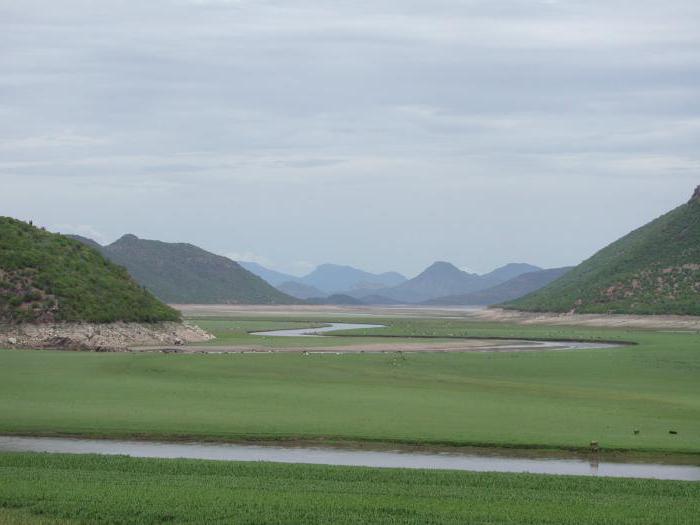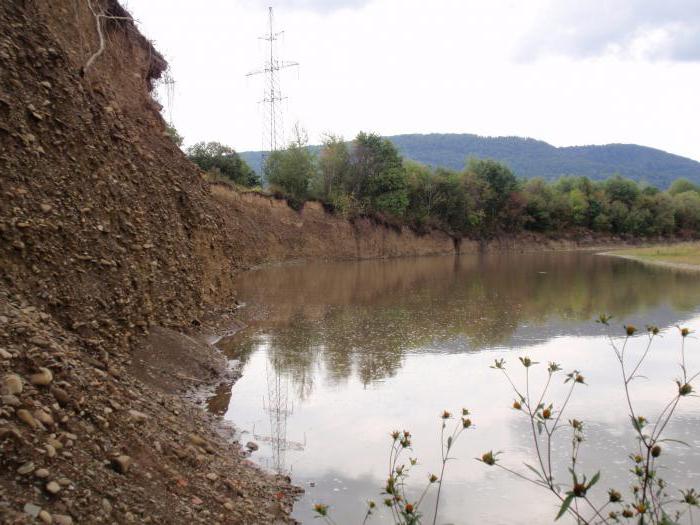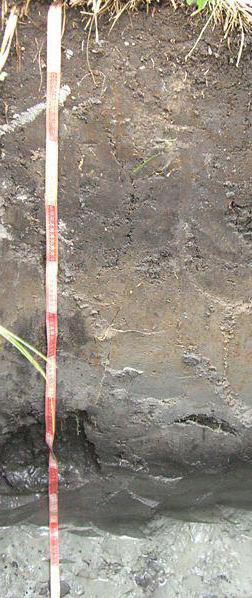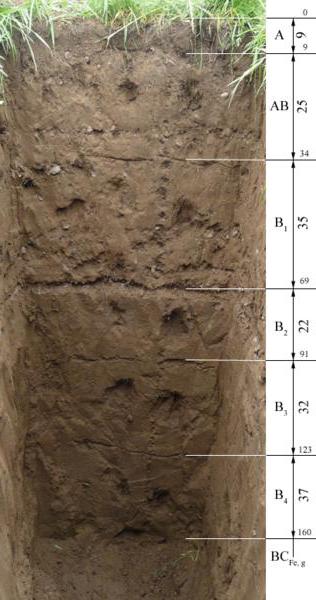What are alluvial soils? Characterization and classification of these soils will be given by us in this article. The name of the soil comes from the Latin word alluvio, which means "alluvium", "sediment". This etymology also explains the origin of soils. They are created by alluvial rivers, that is, they are composed of particles of rocks that the rivers carry from the upper to the lower reaches and leave on their banks during floods. Such material is called alluvium. It is very fertile, because the rivers lay not only minerals, but also the biological remains of plants and animals. The classification of alluvial soils is branched. After all, rivers have their own hydrological regime. The type of soil they form depends on in which area they flow, how often other similar factors spill. Let's take a look at these types of soils in turn.
What are floodplains and terraces
Each aquatic artery over the centuries slowly but steadily alters the relief of adjacent land. And the larger the river, the more intensive this process is. She washes the shores. From this channel becomes wider. But besides coastal erosion, there is also a deep process. A river crashes into the bottom of its bed. This process can be compared to cutting a wound. The deeper the knife digs in, the wider the edges of the skin. But this comparison is very arbitrary. If you look at the river and its banks in horizontal section, you can distinguish the channel, floodplain and terraces. With the first, everything is clear - this is the place where water flows. Silt and other deposits accumulate at the bottom. A floodplain is a section of a river valley that floods during floods. And every time the stream leaves deposits on it. As a result of this accumulative process, alluvial soils are formed. Terraces were once floodplains too. But the river washed the banks, and they parted, forming smooth slopes. Terraces and floodplains are not found in all rivers. For example, in canyons, water flows among solid rocks and cannot erode them.

Characterization of alluvial soils
This type of soil occupies only three percent of the land. But he is considered the most fertile. After all, alluvial soils are essentially river sludge enriched with minerals. Therefore, such soils are valued in agriculture. Recall that all the first human civilizations originated and developed in the riverbeds: the Nile, Yang Zi and Yellow River, the Tigris and the Euphrates. These water arteries gave people fertile soil on which to grow a rich crop, even with a primitive degree of tillage. Even in modern Egypt, all of the country's agriculture is concentrated only along the banks of the Nile. In the floodplain on alluvial soils, water meadows are located , which are the best pastures, and mowing provides livestock with food for the winter. Viticulture is developing on river terraces . With the help of land reclamation in the forest areas, rice cultivation is practiced. Floodplains are of great importance in fisheries. Indeed, during floods, spawning takes place there and young growth is bred.

Classification of alluvial soils
A characteristic feature of these soils is that they quickly grow up. This is especially true for floodplain sites. In some rivers, flood occurs in early spring, when snow melts, in others in winter (in the Mediterranean climate), and in others, in summer, during monsoon rains. But the hydrological regime provides for the annual highest and lowest (low-water) flow levels. Where the river leaves its sediment in the flood, the most intensive accumulative process takes place. But alluvial soils of floodplains are heterogeneous in composition. When floods occur, the flow of the river is very fast near the channel. Therefore, in the coastal part, large particles are deposited - pebbles, sand. When the water leaves, beaches and ramparts form at this place. A little further from the channel, the current is slower. Small particles settle there - silt, clay. There are floodplain areas that are not flooded every year, but only in severe floods. Such soils are layered. And finally, on the terraces there are soddy, forest and meadow soils, folded with the addition of alluvium.

Dobrovolsky classification
A well-known academician of the Russian Academy of Sciences identifies such main types of soils formed by the activity of rivers. G.V.Dobrovolsky distinguishes between riverbed soils composed of alluvium and turf. A little further from the river, in the central floodplain, which can reach several kilometers wide on lowland rivers, meadow soils are located. In marsh alluvial soils located at the foot of the lower terrace, there is a lot of humus and glue. But the classification of Academician Dobrovolsky is applicable only to the rivers of Russia, which flow in a lowland region with a temperate continental climate. In other natural zones, the process of bogging of terraces may not take place.
The impact of climate and groundwater
The river plays a fundamental role in the formation of alluvial soils. After all, it is her sediments that settle on the banks in the floodplain. But also climate affects the alluvial soils, primarily the amount of precipitation. In wet areas, soils are acidic. With a decrease in rainfall, soils become more neutral. In arid areas, alkaline soils are formed. Groundwater also affects soils. True, fickle. In the period of low water and drought, groundwater goes deep into the earth. But in the rainy season and in the flood they make themselves felt. The aquifer can lead to waterlogging of soils, giving them one or another mineralization. This is especially intense in the central and near-terrace parts of the floodplain.
Soil from the source to the mouth of the river
Typically, water flows are born in the mountains. The little brook does not yet have the strength to wash its banks. Yes, and it flows among hard rocks. But water already erodes salts, carries silica and organic substances, oxides of manganese and iron, gypsum and chalk, chloride and sodium sulfate. In the upper reaches of mountain rivers, the alluvium is coarse, composed of pebbles and coarse sand. Water flows in the lowlands of Russia have a different hydrography. They are born in swamps. Therefore, floodplain-alluvial soils even in the upper reaches of the rivers carry a significant part of humus. In the middle course, flat streams meander and often change their channels. The river slows down, making the water stagnant, mineralized, and oxidized in humid climates. This directly affects the formation of alluvial soils. The deltas of such water giants as the Volga, Yenisei, Don, are very branched, divided into sleeves. In the lower reaches, the alluvial process is most intense. Humus, clay, CaCO 3 , salts, potassium, sodium, manganese, and iron compounds are deposited there.

Alluvial turf soils
These soils are located in the immediate vicinity of the river, on its gentle banks. They are characterized by a very small amount of humus in the composition. And although these areas of the floodplain are flooded every year, the river lays here only rough alluvium - coarse sand, pebbles. During floods, ridges form, which are then washed away by atmospheric precipitation. In alluvial turf soils there is little gleying, their composition is mechanical. The top layer is a loose thick loose turf. Below lies a thin humus horizon. Its width, depending on the coastal vegetation, can reach from three to twenty centimeters. Even lower are deposits of light mechanical composition. Such humus-poor soils are not of interest to agriculture.
What is alluvial layered soil
Slightly further from the river bed, behind the coastal ramparts, there are areas that are not flooded every year, but only during heavy floods (in Russia, after especially snowy winters). Thus, deposits of water flow of light mechanical composition (pebbles, sand) here alternate with layers of humus, which is formed from the decay of meadow vegetation. Alluvially layered soil, unlike soddy soils, is more interesting for agriculture. In these flattened areas of the floodplain, farmers graze livestock or use them for hayfields. In the profile, alluvial layered soils have a layer of humus thirty to forty centimeters thick. This allows the development of lush meadow vegetation and shrubs. Sod is also present in the profile, but this layer is thin - about five centimeters. Below is a gleyed layered alluvium. The mechanical composition of such a soil is heavier.
Alluvial meadow soils
They occupy mainly the central lowland parts of floodplains. These soils are composed of loamy or loamy loamy sediments of the river. Shallow-lying groundwater, even during a drought, feeds lush grassy vegetation. Thus, a powerful top layer of fine-humus fine-grained filament is formed in the profile. An aquifer, usually at a depth of less than a meter, capillarily nourishes meadow vegetation. At the bottom of the soil profile, gleying is observed. Humus in alluvial-meadow soils is three percent more than in layered soils. If the groundwater is too mineralized, in such areas of the floodplain, solodized or alkaline subtypes of soils develop. Vegetation has a significant effect on soil formation. Trees and bushes form a podzolized subtype of alluvial meadow soils.
Swamp soils
In closed relief depressions, which are usually observed in the near-terrace zone of a river valley, a moisture stagnation process is observed in a humid climate. In addition, the aquifer leaves the slopes to the surface of the floodplain. All these factors (groundwater, humid climate, depression of the relief) lead to the fact that alluvial bog soils develop in such areas. They are characterized by heavy mechanical composition, high peat content, and gleying. On this soil marsh vegetation develops, sometimes willows. Gleying processes here occur along with alluvium deposits. In addition, soils increase due to the accumulation of humus. By the type of reaction, such soils can be both acidic and slightly alkaline.
Terraces Soil
It should not be forgotten that the high banks of the rivers are also composed of alluvial deposits. Only they are more ancient than the soils of the floodplain itself. Over the centuries and even millennia on the terraces, a powerful layer of other soils has formed - forest podzolic, meadow, chernozem. But under this layer all the same alluvial soils lie.